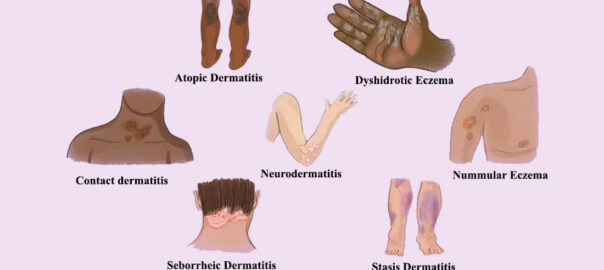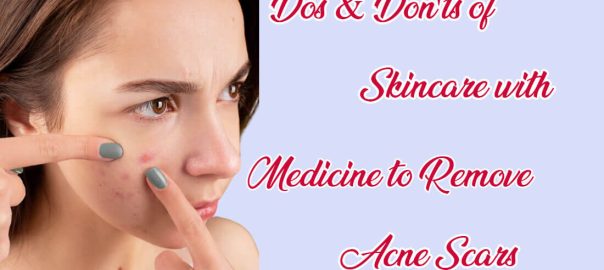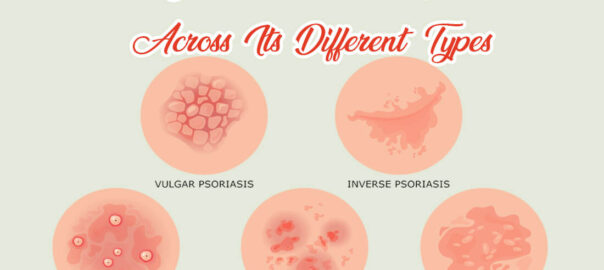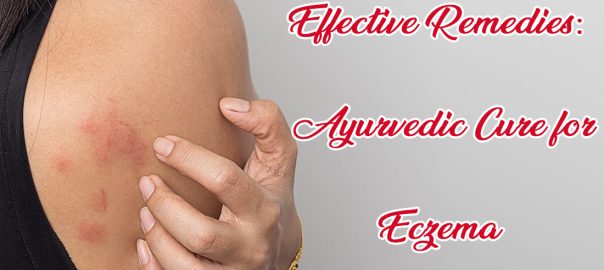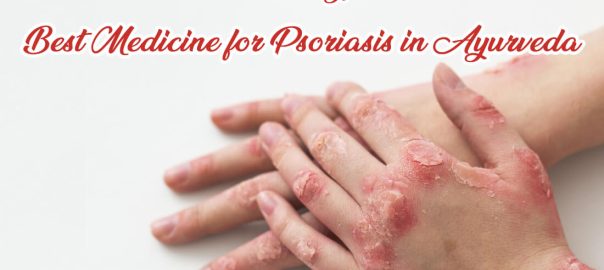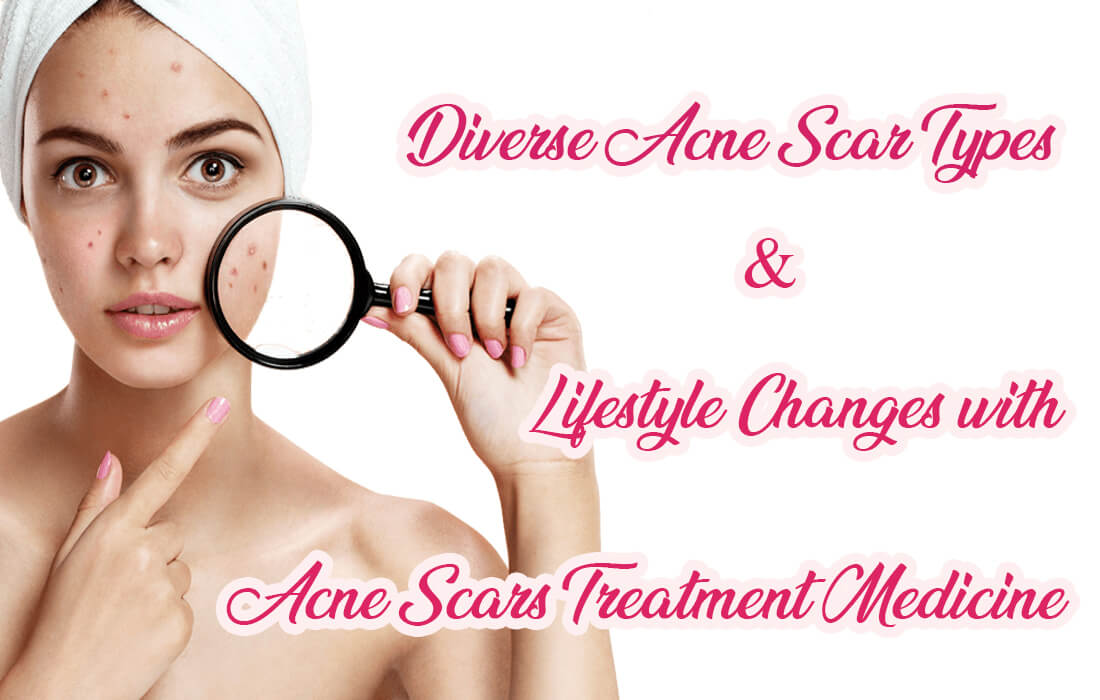
Millions worldwide suffer from acne, which can leave permanent marks. In some cases, acne can result in lasting scars that not only affect the skin’s appearance but also impact one’s self-esteem and confidence. However, the good news is that you can take steps to prevent these scars from forming in the first place with acne scar treatment medicine. In this article, we’ll delve into the different types of acne scars and explore the lifestyle changes you can adopt to minimize their occurrence.
Understanding Different Types of Acne Scars
Acne scars result from inflammation and damage to the skin’s collagen and tissue during the healing process of acne lesions. There are two primary categories of acne scars: atrophic and hypertrophic scars. Let’s delve into each type and its subtypes in detail.
Atrophic Scars:
Depressions or indentations in the skin characterize atrophic scars. These scars occur when tissue is lost during the healing process, leading to an uneven skin surface. There are three main subtypes of atrophic scars:
- Ice Pick Scars: Ice pick scars, characterized by their narrow and deep nature, reach into the dermis, creating a pitted look akin to tiny, round holes in the skin. They are the most common type of atrophic scar and are often difficult to treat due to their depth. Ice-pick scars typically result from the destruction of collagen fibres within the skin during the inflammatory stage of acne.
- Boxcar Scars: Boxcar scars have well-defined edges and a box-like appearance due to their broad, angular depressions. They can vary in size and depth and are often shallower than ice-pick scars. Boxcar scars form when collagen is lost from the skin due to severe inflammation during the healing process. They are more common on the cheeks and temples.
- Rolling Scars: Rolling scars create a wavy or rolling texture. The skin has shallow, sloping depressions that give it an uneven appearance. These scars develop when fibrous bands of tissue form between the skin’s surface and underlying subcutaneous tissue, pulling the epidermis downward and causing the skin to appear uneven.
Hypertrophic Scars:
Hypertrophic scars result from excessive collagen during healing. These scars are common on the chest, shoulders, and back, where the body produces more collagen in response to inflammation.
- Hypertrophic Scars: Hypertrophic scars are raised, red, and firm to the touch. Unlike keloid scars, hypertrophic scars remain within the boundaries of the initial lesion. These scars occur due to an imbalance between collagen production and breakdown during healing. They can be more common in individuals with a genetic predisposition to scar formation.
- Keloid Scars: Keloid scars extend beyond the boundaries of the original wound and are similar to hypertrophic scars. They are raised, thick, and often have a shiny, smooth appearance. Keloid scars result from excessive collagen accumulation during healing, often due to an overactive healing response. Minor injuries, including acne lesions, can trigger them.
- Post-Inflammatory Hyperpigmentation (PIH): While not classified as true scars, post-inflammatory hyperpigmentation (PIH) is a common aftermath of acne lesions, particularly in individuals with darker skin tones. PIH manifests as areas of increased pigmentation that range from pink to brown and can persist even after the acne has cleared. PIH occurs due to an overproduction of melanin in response to inflammation. It often fades over time but can be exacerbated by sun exposure.
Lifestyle Changes to Prevent Acne Scars
While preventing acne altogether might not always be possible, you can adopt several lifestyle changes to minimize the risk of developing acne scars.
- Early and Effective Acne Treatment: To avoid acne scars, timely and efficient acne treatment is recommended. Using appropriate mild cleansers and medicine to clear acne scars can help prevent inflammation and minimize the chances of scarring.
- Hands Off Approach: Picking, squeezing, or popping acne lesions can worsen inflammation and increase the likelihood of scarring. The temptation to touch your face should be avoided, as it can introduce bacteria and cause further damage to the skin. Let acne lesions heal naturally.
- Sun Protection: UV radiation can exacerbate inflammation and hinder healing, potentially leading to more noticeable scars. It’s crucial to apply sunscreen of at least SPF 30 daily; even when skies are cloudy, it is imperative to take essential steps to safeguard your skin against the detrimental effects of UV rays.
- Healthy Diet: A vitamin-rich diet, minerals, and antioxidants can promote skin health and healing. Dietary sources of vitamin C, E, zinc, and omega-3 fatty acids aid the body’s innate healing mechanisms.
- Hydration: Adequate hydration is crucial for maintaining skin elasticity and promoting healing. Drink plenty of water throughout the day to keep your skin hydrated from the inside out.
- Gentle Skincare Routine: Avoid harsh scrubs and abrasive skincare products that irritate the skin and exacerbate inflammation. Instead, opt for gentle cleansers and skincare products that are non-comedogenic and suitable for your skin type.
Other effective preventive measures of Acne Scars
- Regular Exercise: Maintaining regular physical activity increases blood circulation, facilitating skin nourishment with oxygen and nutrients. Just cleanse your skin post-workout to prevent sweat from clogging pores.
- Avoid Smoking and Limit Alcohol: Smoking and excessive alcohol use significantly impair the skin’s ability to heal and regenerate. Maintaining healthy skin requires avoiding tobacco and consuming alcohol in moderation.
- Manage Stress: Chronic stress can trigger hormonal fluctuations that contribute to acne development. Engage in stress-reduction techniques such as exercise, meditation, yoga, or deep breathing to maintain healthy hormone levels.
- Proper Wound Care: If you have opened acne lesions, practice proper wound care to prevent infection and scarring. Keep the area clean, apply an antibacterial ointment, and avoid picking at the scab.
Your Path to Radiant Skin: Your Choices Matter
Whether you opt for modern medicine, ancient wisdom like medicine to remove acne scars or a combination of both, your choices matter. Your skin’s health is a reflection of your commitment to self-care. You’re investing in lasting skin radiance by choosing the right treatments and maintaining a healthy lifestyle.
Maintaining Your Skin’s Beauty: Long-Term Care and Prevention
Keeping your skin’s beauty becomes paramount after successfully reducing or eliminating acne scars. Adopt a long-term skincare routine that includes cleansing, exfoliating, moisturizing, and sun protection. Consistent care will not only preserve your results but also prevent future breakouts and potential scarring.
Conclusion
Acne scars can leave lasting marks on appearance and confidence. Employing proactive skincare and healthy living can minimize the chances of spots, though complete prevention is uncertain. Early and effective acne scar treatment medicine, sun protection, a balanced diet, proper hydration, and stress management are all essential for a scar-prevention strategy. Remember, maintaining healthy skin goes beyond the surface – it’s a holistic journey involving internal and external care. With the right approach and patience, you can take significant strides towards smoother, more radiant skin that boosts your confidence.

